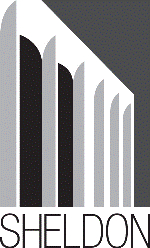Fine and Performing Arts, Hixson-Lied College of

Sheldon Museum of Art: Catalogs and Publications
Date of this Version
2012
Abstract
Drawn largely from the Sheldon Museum of Art’s permanent collection, Partners and Adversaries: The Art of Collaboration explores the productive and often ambivalent partnerships that coalesce around artistic practices. These include familial and romantic relationships, where ambitions and successes may clash and collide at the expense of one partner; the mutually dependent yet divergent interests of artists and their dealers; the dance of imitation and distinction between student and teacher; the official sanction of government support, everywhere shadowed by the threat of moralizing censure; and, increasingly in contemporary art, new processes and technologies that empower fabricators whom artists must collaborate with to achieve the results they desire.
Partners and adversaries sound like contrasting entities—one desirable, one not. While we may seek out partners, we generally don’t invite adversaries into our lives. We may, however, to our regret, find ourselves confronted by them. The truth, of course, complicates any easy distinction. So if adversaries appear unbidden, from where do they come? If we think about it, we realize that they lie nascent in our existing partnerships, whether at home, work, or in sports: what brings us together can drive us apart.
In fact, the word partner itself registers this potential divisiveness. Stemming from Old French, the term builds on its antecedent sense of partition. Division is the precondition to partnership. Partners are defined, therefore, by the negotiation of their differences and the realignment of competing wills. What artistic partnerships have in common is the dynamic of collaboration. As such, they all require negotiations of power: some form of exchange, giving up a measure of authority to gain a benefit of another sort.
This volume reviews some of these artistic partnerships in the following four essays. The first, by Jonathan Stuhlman, explores the work of Robert Henri and his role as teacher and mentor, touching on his relationship to several of the artists represented in Sheldon’s collection, including George Bellows, Isabel Bishop, Elsie Driggs, Edward Hopper, and Rockwell Kent. Such relationships are akin to what literary critic Harold Bloom described as “the anxiety of influence” among poets—a tension that every artist grapples with to become independent of his teacher.
Brandon Ruud, curator of Partners and Adversaries, contributes two essays. The first trains a sensitive eye on the partnership peculiar to artists and their models. It may seem at times forged from a loving union, as in the example of Harry Callahan, whose muse and primary subject was Eleanor, his obliging wife, or, similarly, of Alfred Stieglitz’s innumerable close-ups of his own wife, Georgia O’Keeffe. Yet always an artist-model dyad implies an exchange of power: one agrees to submit to the other’s creative authority. From the one’s acquiescence, the other extracts value. Ruud’s focus here is on Evelyn Nesbit, a media star of her time, and the sympathetic lens of Gertrude Käsebier’s photographic regard for her.
Ruud’s second essay recalls the conflicting experiences artists have had with the federal government, concentrating on Paul Cadmus and Charles White, two among thousands of American artists who enjoyed government support during the Great Depression. At any governmental level, support and censure will reflect the ideologies of those who run or lobby government and reveal, ultimately, the ambivalent relationship people have with art. We sometimes think of government as an abstraction that doesn’t understand us. Of course, government is simply a very complicated instrument for performing the will of very real individuals whose hands pull its seemingly abstract levers. The decisions of these individuals, of course, can at times make or break an artist’s career.
Christin Mamiya contributes the fourth essay, which is about Jasper Johns and Robert Rauschenberg, lovers who inspired each other for years, subsequently broke up, and refused to speak to each other for a decade. The hostility of a ten-year silence resonates boldly from the adversarial underbelly—or naturally competitive nature—of romantic relationships generally. Lovers are always in contest, whether over love, fidelity, or finances.
Perhaps partnerships simply domesticate the adversarial state of nature in which we would otherwise be thrown. Even lovers make a social contract, of sorts. Here also we may find the ideal and model for legitimizing government and civil society, if we follow Jean-Jacques Rousseau in his democratic treatise The Social Contract, this year commemorating the 250th anniversary of its publication. Democratic society runs on the partnership of adversaries—and stalls when the balance is lost. A lesson for our times.
The lone artist who creates from inner necessity without regard to social tastes is a Romantic fiction. Real artists’ lives show us that to live in the world is to barter one’s way through myriad relationships. To what degree, therefore, does the rosy word partner dissimulate the adversarial nature inherent in any relationship? Or, even further, to what extent do partnerships create adversaries? These are some of the questions we begin to pose—insights we begin to glean—by learning from the lives of artists. It is, after all, from the sticky substance of lived experience that artists create their work. By formulating questions such as these, we read anew the work of artists and their lasting relevance to our own lives.


Comments
This catalog is published in conjunction with the exhibition Partners and Adversaries: The Art of Collaboration, on view at the Sheldon Museum of Art from February 3 to May 27, 2012. © 2012 Sheldon Museum of Art. All rights reserved. No portion of this publication may be reproduced without the written permission of the Sheldon Museum of Art.
Editors: Gregory Nosan and Brandon K. Ruud
Graphic design: Ludlow6, New York, NY
Printer: Brodock Press, Utica, NY